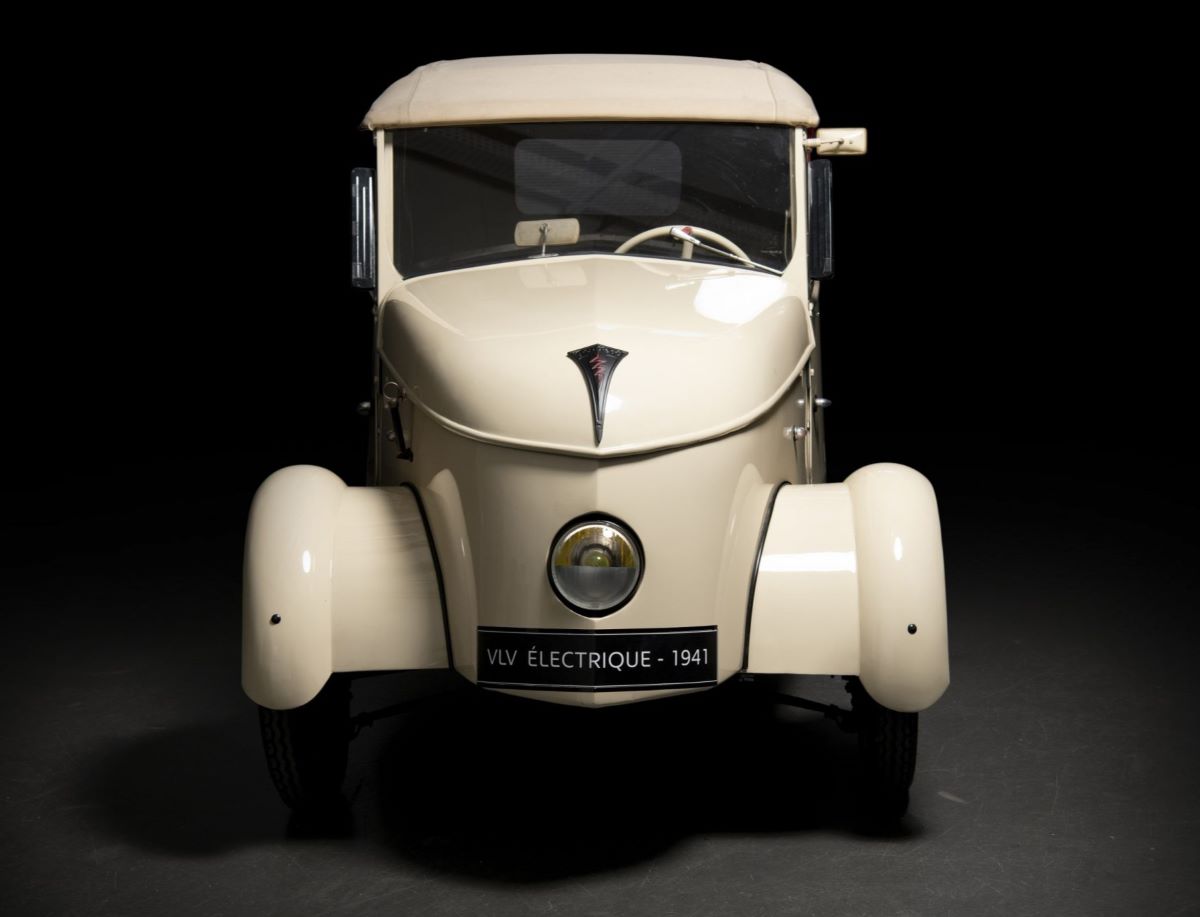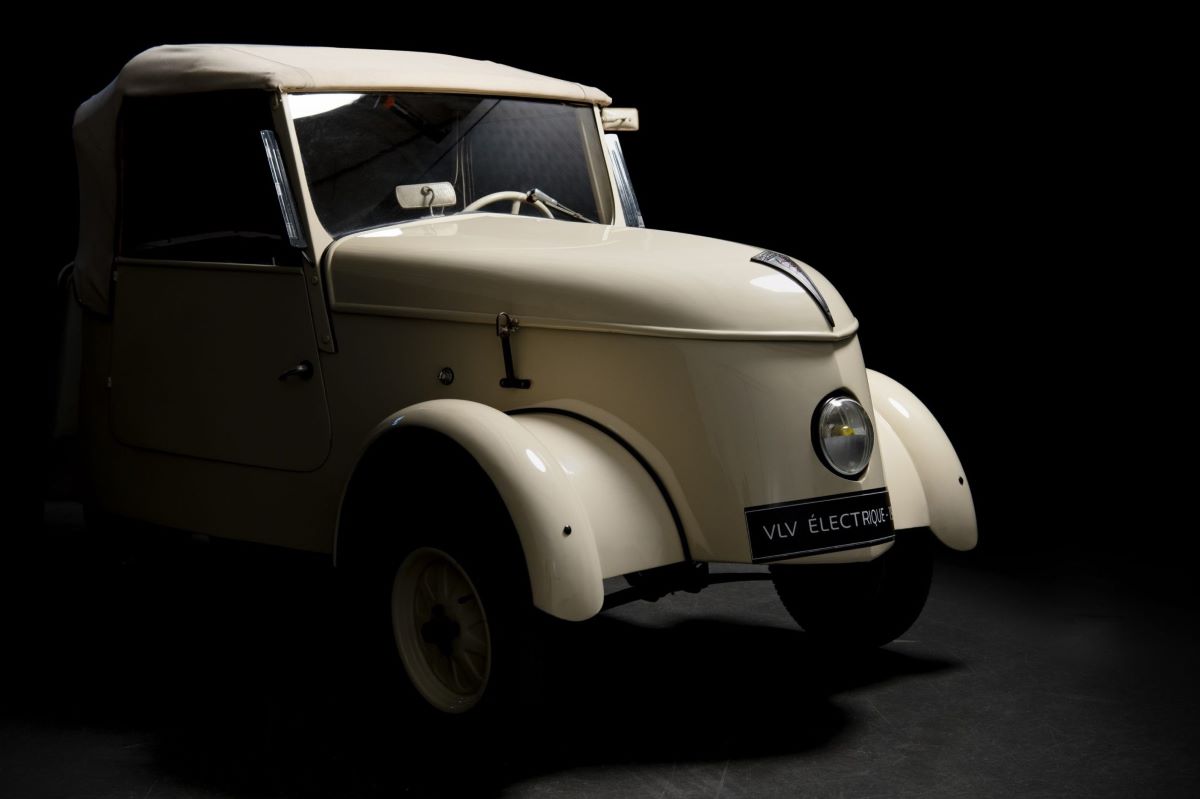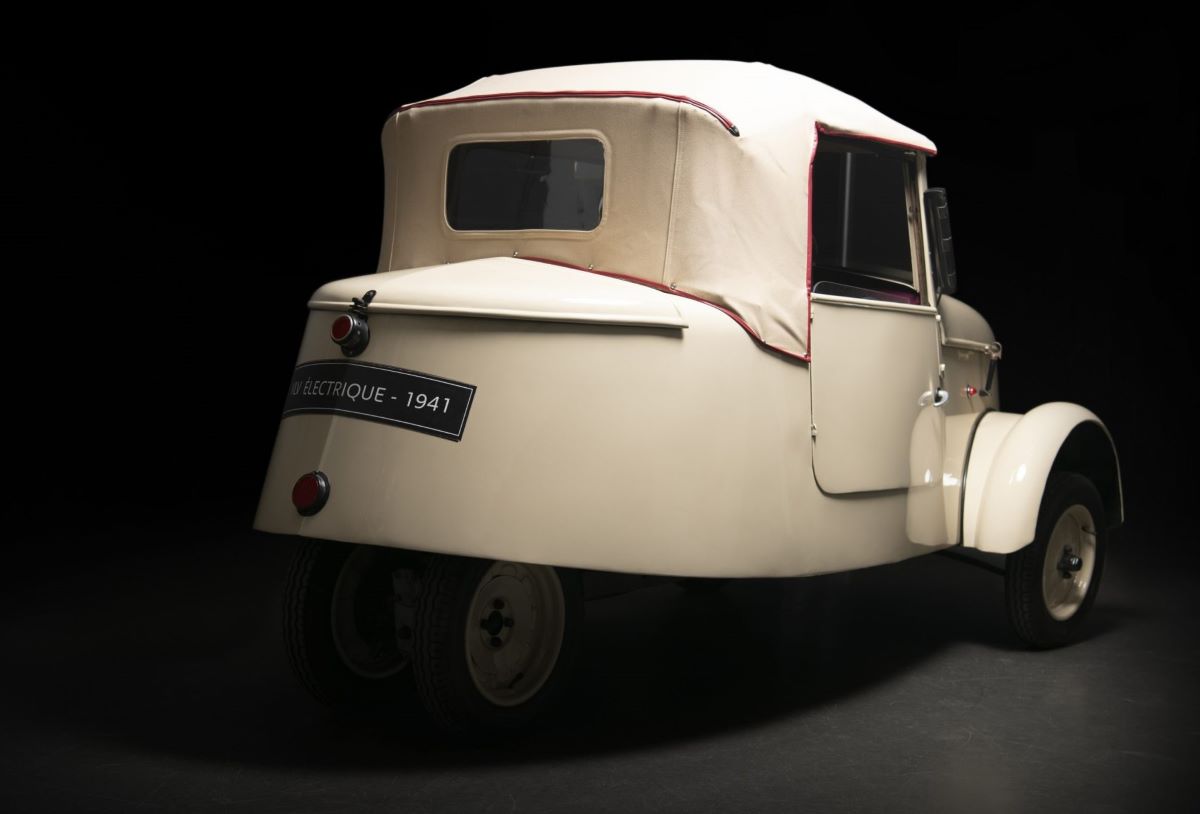
Simple ingenuity
In 1941, faced with the German occupation and fuel shortages, PEUGEOT developed a unique alternative for the time: the VLV (“Véhicule Léger de Ville – Light City Vehicle“), a small car designed with an electric drivetrain. This was the first PEUGEOT electric vehicle and was a mini cabriolet with two offset seats.
This economical vehicle, designed for urban use, was intended to meet the transport needs of those whose vehicle had been requisitioned or could not be driven due to a lack of fuel, which was often rationed and very expensive. Designed as a “cyclecar”, with a wide track at the front and a narrow track at the rear, the VLV ran on electricity using batteries stored in the front, and an electric motor without a differential that powered the rear wheels. Its range was 43 to 50 miles at speeds up to 21mph. It was mostly used by postal workers and doctors. In total, 377 PEUGEOT VLVs were produced between 1941 and 1943 at the La Garenne factory in the Paris region.



You must be logged in to post a comment.